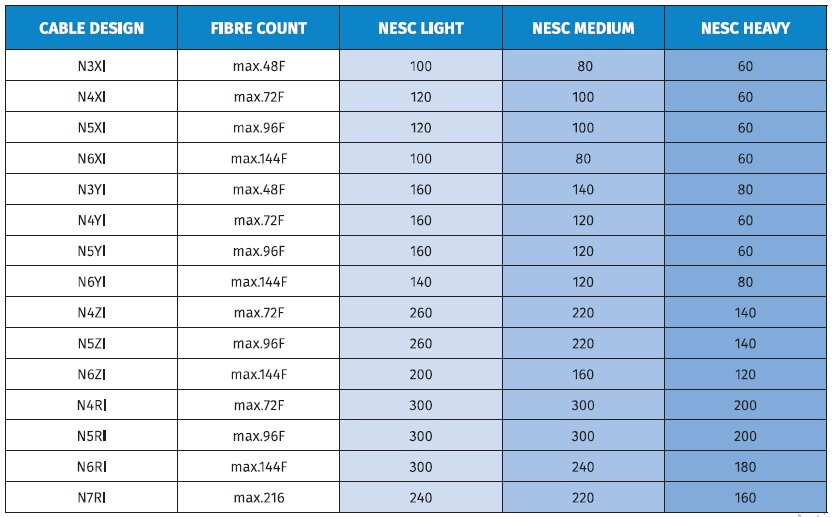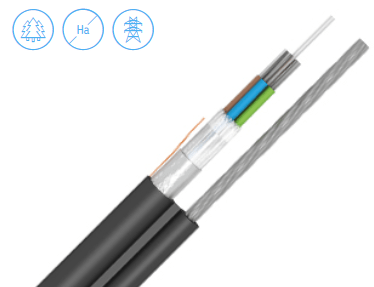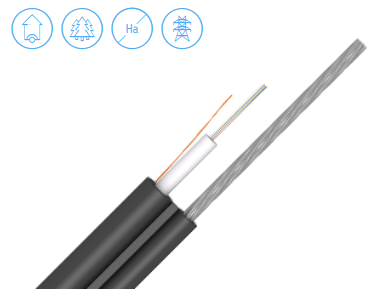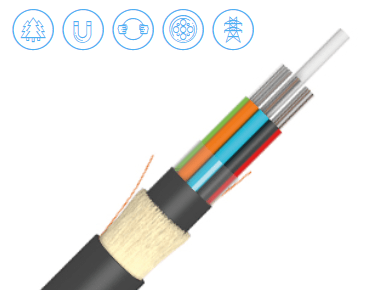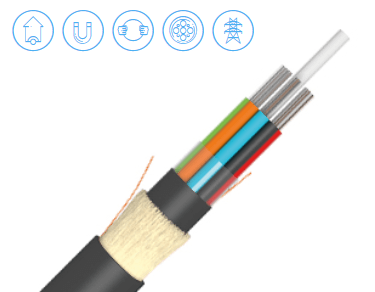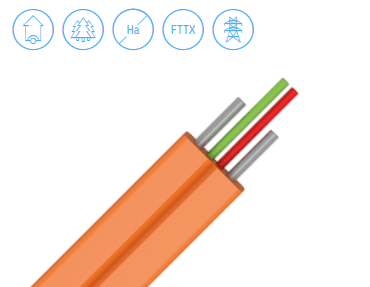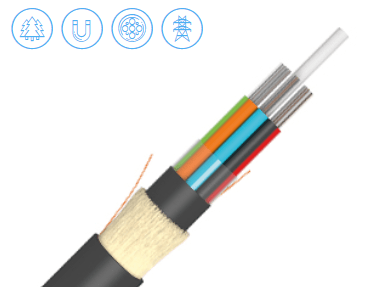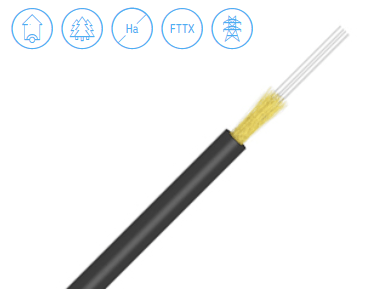The aerial fibre optic cables are mostly installed on existing overhead poles. The method of erecting overhead cables is easy to accomplish. This installation method has its own advantages. It can greatly save construction costs and shorten the construction period. The main disadvantage of aerial fibre optic cable is that they are susceptible to natural disasters, external forces and mechanical strength. Therefore, they are designed to resist ultra-violet light, mechanical strength and temperature fluctuations.
The range of aerial fibre optic cables includes round, flat or figure 8 shape cables with central loose tube or stranded multi loose tubes construction, with fibre reinforced plastic (FRP) or steel rods, with steel wire messenger for self-supporting.
ADSS aerial fibre optic cable
All-dielectric self-supporting (ADSS) cable is a type of optical fibre cable that is strong enough to support itself between structures without using conductive metal or FRP elements. It is used by electrical utility companies as a communications medium, installed along existing overhead transmission lines and often sharing the same support structures as the electrical conductors. In the design of the cable, the internal glass optical fibres are supported with no strain, to maintain low optical loss throughout the cable life. Cable jacket prevents moisture from degrading the fibres. The jacket also protects the polymer strength elements from the effect of solar ultraviolet light.
